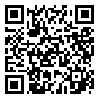BibTeX | RIS | EndNote | Medlars | ProCite | Reference Manager | RefWorks
Send citation to:
URL: http://jdisabilstud.org/article-1-2899-en.html
2- Professor, Department of Clinical Psychology, Faculty of Psychology and Education Sciences, Shiraz University, Shiraz, Iran
3- Assistant Professor, Department of Clinical Psychology, Faculty of Psychology and Education Sciences, Shiraz University, Shiraz, Iran
Abstract
Background & Objectives: Establishing interaction with others and developing interpersonal relationships stands out as one of the basic requirements of human life. However, not all people are successful in interpersonal communication. Some psychological theories mention mental problems as the drawbacks in interpersonal relationships. In contrast, opposing approaches mention mental problems as the consequence of troubles in interpersonal relationships. Borderline personality disorder (BPD) is a psychiatric condition characterized by unstable interpersonal relationships, difficulty in emotional regulation, fear of abandonment, chronic restlessness, persistent depression, and risky behaviors. Unstable and fluctuating interpersonal relationships in BPD sufferers show a wide range of distress in their relationships, which causes deep discomfort and mistrust. The present study investigated the lived experience of BPD sufferers from their interpersonal relationships, which are experienced and understood subjectively.
Methods: The present research method was qualitative and phenomenological. The target population comprised all people with borderline personality disorder living in Shiraz City, Iran. The research sample was selected by purposive sampling. The sampling continued without any restrictions until data saturation was reached and no new concepts were found that required new codes or expansion of existing codes. The research reached saturation after analyzing the data of 15 participants. A semi–structured interview was used as a tool to collect data. Data analysis was done using the three–step Colaizzi coding method using MAXQDA software. In general, after classifying the codes and merging the codes related to the compiled themes, they were placed in special thematic categories. Finally, all the concepts were categorized and divided according to the research purpose.
Results: Based on the results of the first stage of coding, 124 basic items were identified. Axial coding determined that the basic items fit into 14 semantic categories under the title of organizing themes. Finally, selective coding yielded 5 principal themes: identity (including self–acceptance, exposure, and ability to manage), family (the individual's relationship with family and family background), emotional (negative emotions and positive emotions), behavioral–functional (conflict and war, escape–avoidance, and orientation), and cognitive–intellectual (beliefs, cognitive errors, thought content, and attention).
Conclusion: The lived experience and understanding of people with borderline personality disorder from interpersonal relationships includes 5 principal themes of identity, family, emotional, behavioral–functional, and cognitive–intellectual.
| Rights and permissions | |
 |
This work is licensed under a Creative Commons Attribution-NonCommercial 4.0 International License. |




